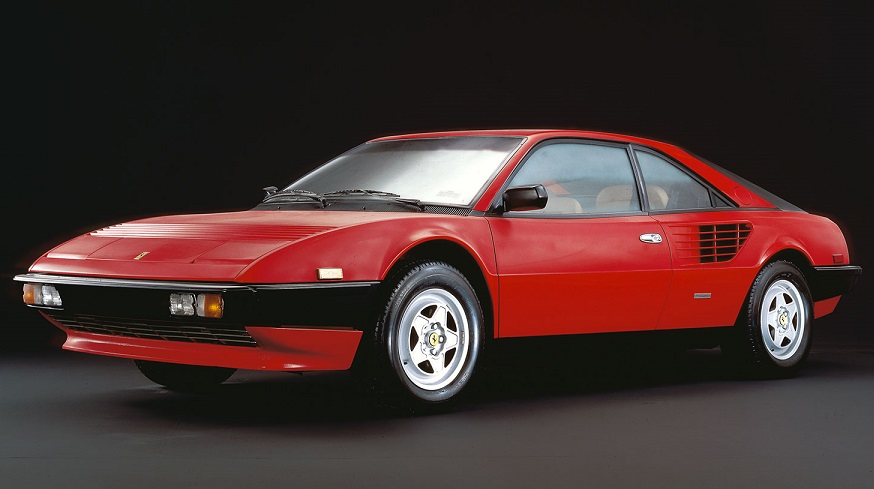

Coupe, 2 Doors, 4 Seats
20.7 l/100 km 11.36 US mpg
9 l/100 km 26.13 US mpg
270 Hp
84.8 Hp/l
250 km/h 155.34 mph
3185 cm3
194.36 cu. in.
8, V-engine
Rear wheel drive,
4285 mm
168.7 in.
1795 mm
70.67 in.
1410 kg
3108.52 lbs.
| Brand | Ferrari |
|---|---|
| Model | Mondial (Coupe) |
| Version | Mondial |
| Engine version | 3.2 Quattrovalvole (270 Hp) |
| Year production start | 1985 |
| Year production end | 1988 |
| Vehicle type | Coupe |
| Horsepower RPM | 270 Hp |
| Acceleration 0 - 100 kmh sec | 7.4 sec |
| Curb weight kg -lbs total |
1410 kg3108.52 lbs. |
| Overall length mm - inch |
4285 mm168.7 in. |
| Doors | 2 |
| Top Speed | 250 km/h 155.34 mph |
| Designation model | F105 |
|---|---|
| Cam configuration | DOHC |
| Engine position and orientation | Middle, Transverse |
| Cylinders | 8 |
| Position of cylinders | V-engine |
| Displacement (liters) |
3185 cm3194.36 cu. in. |
| Eng. horsepower RPM | 270 Hp |
| Horsepower per litre | 84.8 Hp/l |
| Weight / horsepower kg/hp - hp/tons |
5.2 kg/Hp191.5 Hp/tonne |
| Weight / torque kg/Nm - Nm/tons | 4.6 kg/Nm, 215.6 Nm/tonne
4.6 kg/Nm215.6 Nm/tonne |
| Torque Nm RPM lb-ft RPM |
304 Nm @ 5500 rpm.224.22 lb.-ft. @ 5500 rpm. |
| Bore (mm in) |
83 mm3.27 in. |
| Stroke (mm in) |
73.6 mm2.9 in. |
| Compression ratio | 9.8 |
| Fuel delivery system | Multi-point indirect injection |
| Fuel type | Petrol (Gasoline) |
| Valvetrain | 4 |
| Engine aspiration | Naturally aspirated engine |
| Engine oil liters | quarts |
10 l10.57 US qt | 8.8 UK qt |
| Engine coolant |
24 l25.36 US qt | 21.12 UK qt |
| Powertrain architecture | Internal Combustion engine |
| Engine location | Middle, Transverse |
| Drive configuration | Rear wheel drive |
|---|---|
| Transmission | 5 |
| Front brakes | Ventilated discs |
|---|---|
| Rear brakes | Ventilated discs |
| Steering type | Steering rack and pinion |
|---|---|
| Turning diameter m - ft |
11.85 m38.88 ft. |
| Front suspension | Double wishbone, Transverse stabilizer |
|---|---|
| Rear suspension | Double wishbone, Transverse stabilizer |
| Wheels size | Front wheel tires: 220/55 R16 |
|---|---|
| Wheels rims | Front wheel rims: 7J x 16 |
| Passengers seats | 4 |
|---|
| Overall length mm - inch |
4285 mm168.7 in. |
|---|---|
| Overall width mm -inch |
1795 mm70.67 in. |
| Overall height mm -inch |
1128 mm44.41 in. |
| Wheelbase mm - inch |
2350 mm92.52 in. |
| Track width front mm - inch |
1473 mm57.99 in. |
| Track width rear mm - inch |
1468 mm57.8 in. |
| Curb weight kg -lbs total |
1410 kg3108.52 lbs. |
|---|---|
| Fuel tank liters | gallons |
80 l21.13 US gal | 17.6 UK gal |
| City l/100km - mpg |
20.7 l/100 km11.36 US mpg |
|---|---|
| Highway l/100 km - mpg |
9 l/100 km26.13 US mpg |
8 CYLINDER V-Engine
https://www.thecarspec.net/components/engine/8-cylinders-v